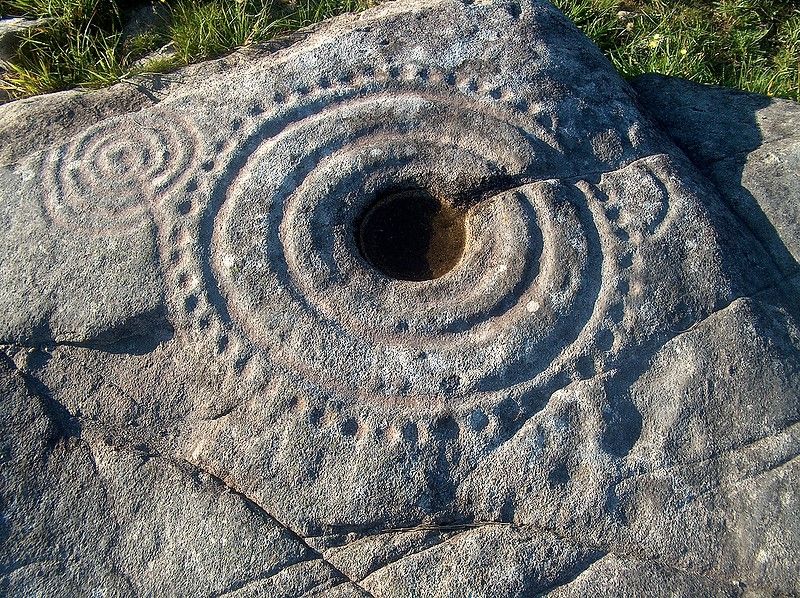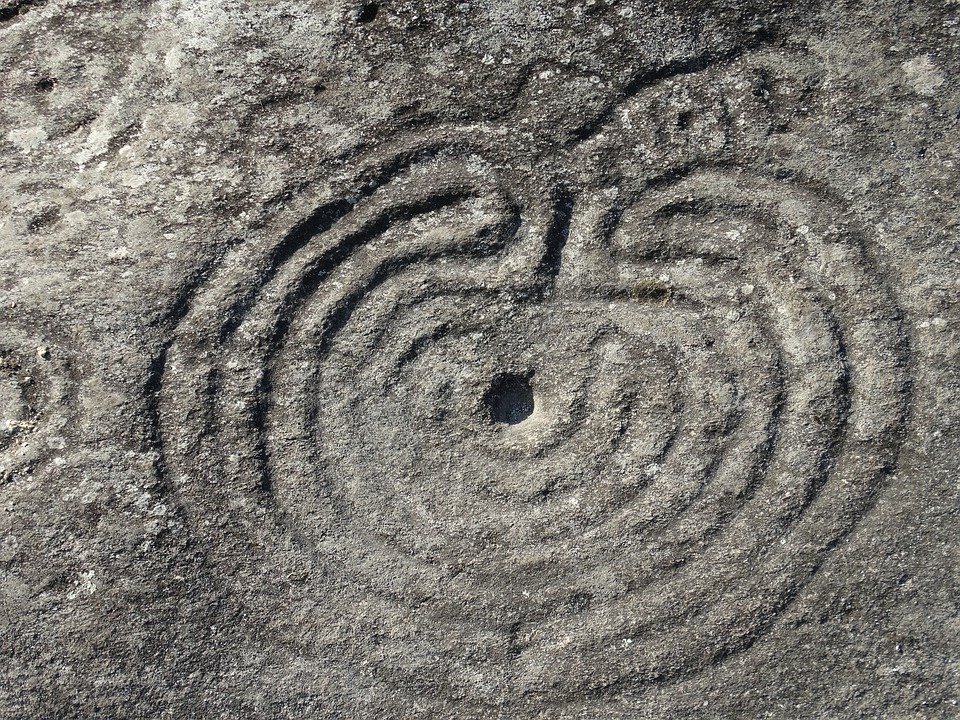The Galician Spirals

Galician rock art is filled with geometrical designs that are identical to the ones of hundreds of petroglyph sites throughout the globe: circular combinations, spirals, and to a lesser extent, mazes and labyrinth shapes, and cup-marks are universal symbols from a bygone age that we are basically unable to define with any certainty.
All of the rock art found in Galicia is carved on granite, mostly on horizontal or sloping rocks, and rarely on vertical supports.

The petroglyphs at Mogor Beach overlook the Atlantic Ocean while it enters the Ria of Pontevedra (Pontevedra actually has one of the biggest concentrations of rock art in Europe). The most famous among the carved stones is the Labyrinth Stone, locally known as Pedra do Labirinto, a series of carvings that seem to represent mazes and labyrinths, symbols that are common to several ancient cultures, even incredibly distant ones like North American civilizations.
The absence of a direct relationship between the petroglyphs and archaeological elements susceptible to being dated with a degree of certainty has led to controversy in the opinions of researchers studying the chronological background of these carvings. It is however generally accepted that they might date back to 4000 years ago (Early Bronze Age, 2500-1200 BC).
The consensus was reached because of the fact that some petroglyphs show weapons, such as halberds and short swords with triangular blades, that are very similar models to those found in contexts from the Early Bronze Age. However, as case history suggests, other petroglyphs may have been added later to the original collection.
In any case, what we are looking at here are perfect examples of identical designs that are found all over Europe, in an enigmatically abundant quantity and in very different, distant areas.
For instance, most of the spiral, labyrinth, and cup mark motifs perfectly match the English and Scottish ones that can be found in Northumberland.
Detailed research about the numerous petroglyphs that can be found throughout Galicia, as well as a map, can be found at ResearchGate following this link.
